
Photo by Martin Shreder on Unsplash
How to make an unforgettable impression with an outstanding portfolio
Table of contents
- How did I get my first job
- 💼 The Briefcase technique
- 🗂️ The portfolio era
- One last piece of advice
Before telling you how to create an outstanding portfolio, I want to tell you my personal story of how I got my first job eight years ago.
How did I get my first job
I was a third-year college student about to start my vacations, the only moment when I could do one of the two internships required to apply for my degree.
At one moment, I saw a job application that caught my interest. I called and had a remote meeting with the founders of a startup company looking for people to assemble their first team.
They were a B2B company selling a solution to reduce the costs and time spent in the last mile problem (The journey between when a package leaves the warehouse and arrives at your door). They were looking for developers to build a web platform for administrators and a mobile app to be used by the delivery guys.
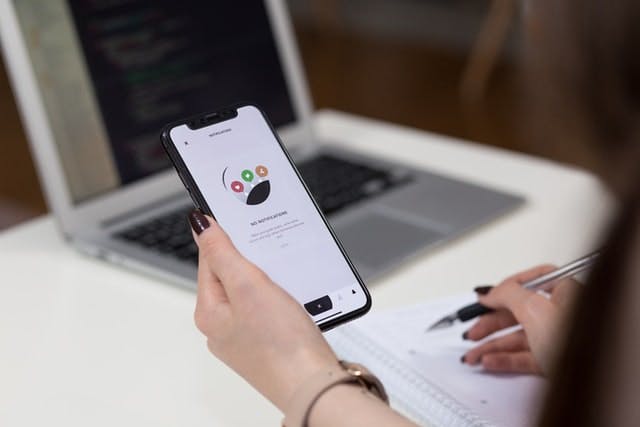 Photo by freestocks on Unsplash
Photo by freestocks on Unsplash
The meeting went right, and they asked me to have a technical interview next week. I got nervous because I had zero experience in technical interviews and also coding real projects, but I had an idea, I was going to spend the whole week working to show them what I was capable of doing.
I was inexperienced in crafting software, but I spent that week learning the technologies they were using to design and code the mobile app they were looking for.
After that week, I presented them with a totally functional proof of concept of the mobile app...they were speechless. As you might guess, I got the internship, and later I got hired, but more impressive it was that they kept talking about that moment to every new hire for the next five years I worked there.
I didn't know back then, but what I did was called the briefcase technique.
💼 The Briefcase technique
According to Ramith Sethi from I'll teach you how to be rich, who name the technique, the secret to selling yourself and the main idea behind the briefcase technique is to SHOW, DON’T TELL.
The technique consists of two parts:
- Gather information about the client
- What are they selling?
- What are they looking for?
- What are they working on?
- What tools are they using?
- Look into the future
- Brainstorm how you can add value
- Building a Proof of concept?
- A design change?
- Your experience leading teams?
- Creating a plan to improve skills within the team?
- Show your proposal highlighting the value you'll add working with them
- Brainstorm how you can add value
As you notice, with this technique, the work starts even before you meet the client or future employer. You research their business and try to spot specific issues, pain points, challenges; things you could solve or do better for them. This will position you better compared with a person who is just answering questions like in any interview.
Think about interviews as auditions instead of boring questionnaires and make them easy to say to you YES by shifting the discussion about you to what you're capable of doing by using an effective proposal to solve their problems.
🗂️ The portfolio era
In my story, I recognize that having that first meeting was crucial to pulling off the briefcase technique, but I got that meeting just because I was a college student, and back then, that was enough to catch companies' attention. Now, I wouldn't stand a chance even to get noticed without more evidence of my skills and experience.
These days being a college student or having a degree doesn't have the same relevance as it was before because people realized that provable skills are more important than theoretical knowledge.
You need to show what you've built. This is the Portfolio era!
What projects should you leave out of your portfolio?
Not everything you build is worth showing off.
A portfolio is your presentation card to the world to tell what you can do that makes you stand out from the competition. Therefore, any kind of project that's repetitive and common should be discarded immediately.
Projects like:
- ❌ Calculator
- ❌ Todo list
- ❌ Pomodoro app
- ❌Your portfolio website 🙄
- ⚠️ Clone apps
Projects developed for learning purposes are good for serving as examples in your blog posts and for documenting your process, but not for your portfolio. Why? because everyone had coded one of those at some point, and remember, you want to make an unforgettable impression.
Cloned apps are a special case because if they're functional enough, they could serve to show off your UI/UX knowledge or your skills in building complex systems. So, It's ok to include them, but don't make them the main point of focus; treat them as complementary projects.
The Outstanding Portfolio
For any job, there will be skills that you won't have because you don't have the technical or domain knowledge the company needs, and that's ok.
It's impossible to know EVERYTHING.
You should put your time and energy into building the skills that transcend particularities and are required for any software development role.
Like:
- 👥 Team Player
- 🧠 Problem-solving
- 📐 System design
- ✅ Code quality (tests, clean code)
- 💡 Creativeness/Innovation
- 📚 Active learning
- 🚀 Deployment
The key is to demonstrate those skills through multiple projects. To help you with that, I've classified the projects - that your outstanding portfolio needs - into three main categories that groups the skills earlier mentioned:
1. Projects to show everything you've learned so far
Here is where you put: Experiments, theory, crazy algorithms, libraries. The idea is to show what you've been learning so far.
In this video, Clément Mihailescu tells us that he built an algorithm visualizer for his portfolio, which helped him to get a job at Google.
2. Projects to solve a real problem, starting from one of your own
Here goes probably the most interesting projects you can show because that's what we do, that's our job, to solve problems!
It was used by real users? Then talks about it! What problems did you have? How did you solve them?
Those are the things we want to hear!
The solution will catch people's attention no matter how simple it's.
That's the case of Katherine Peterson. She built readme.so, a website to quickly create a README.md file.
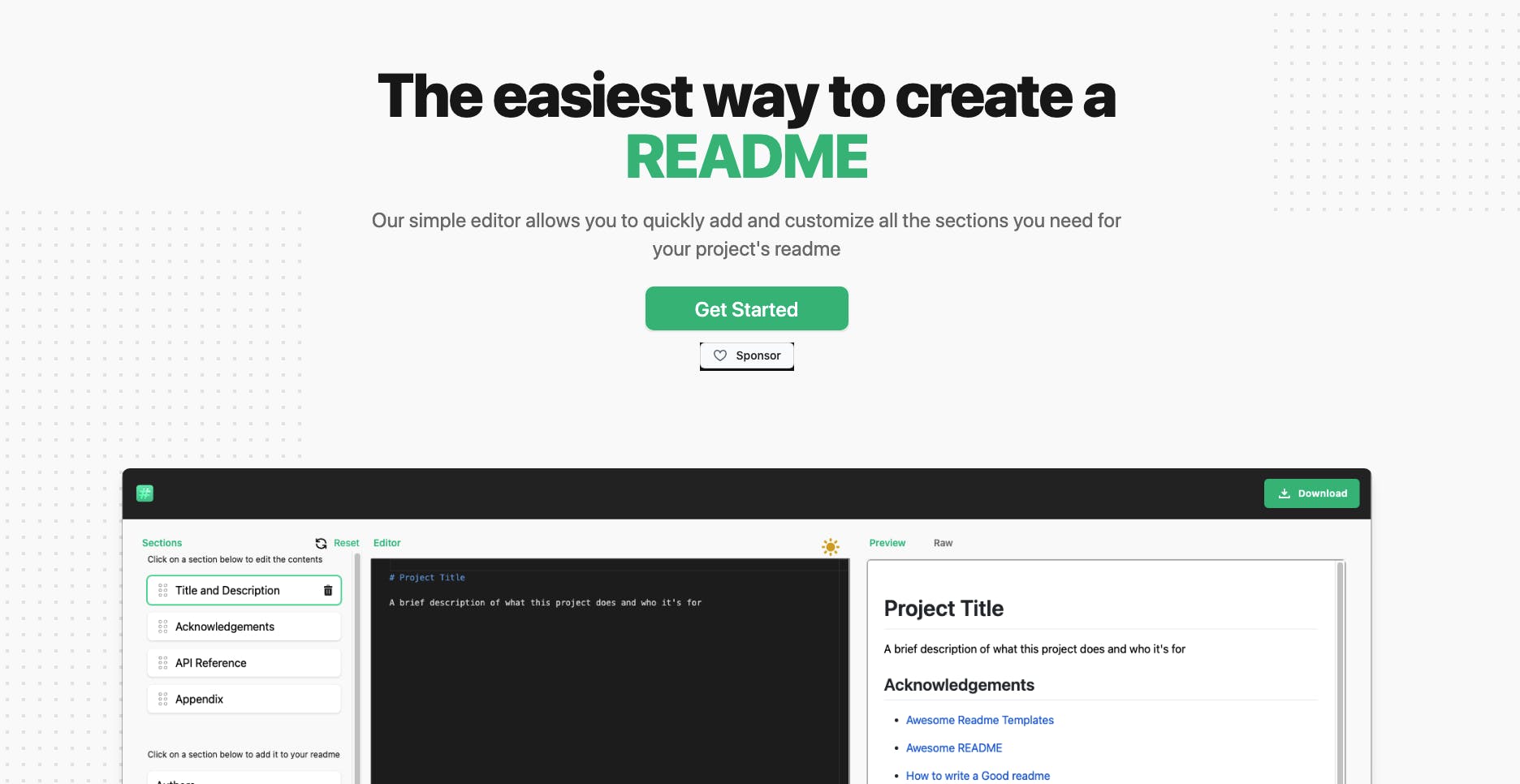
The website caught Githubt's attention, and she got interviewed thanks to the project. In the end, she accepted an offer, and now she is working there.
3. Projects to collaborate and build in public
Working with more people on the same project is a good indicator that you'll work fine within a team because you've real experience in coordinating work among a team, listening to ideas, and solving human problems.
Also, building Open Source projects and publicly talking about your progress makes people get interested; remember that you've to think of getting a job as an audition.
The most important thing about your portfolio are the projects and content, not the website itself
Alyssa Xhas built a ton of good projects but look at her portfolio's website; it's dead simple.
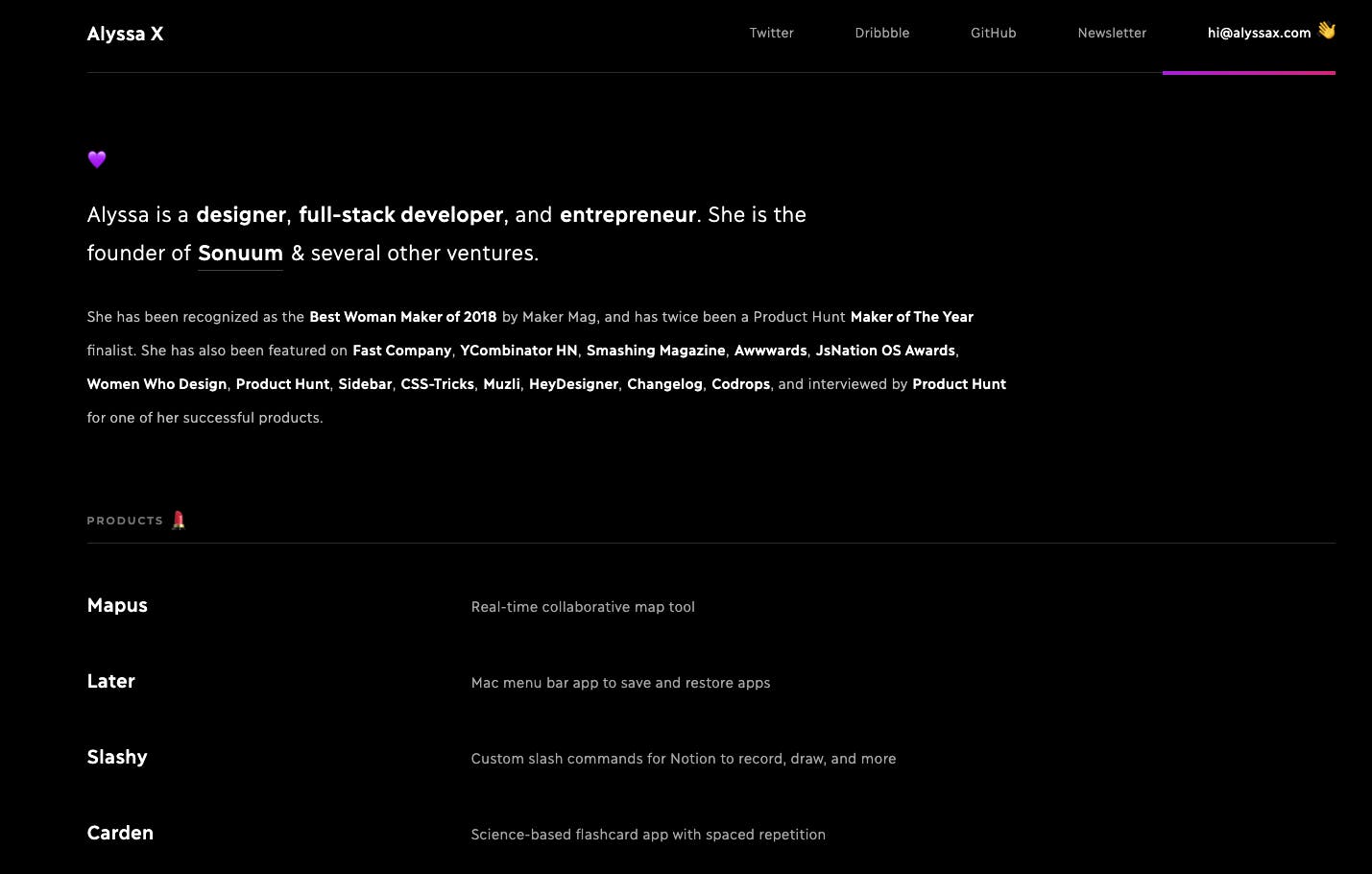
It can probably be enhanced with pictures of her projects but what it's interesting is when you enter each link and see the repositories, articles, and things she has built.

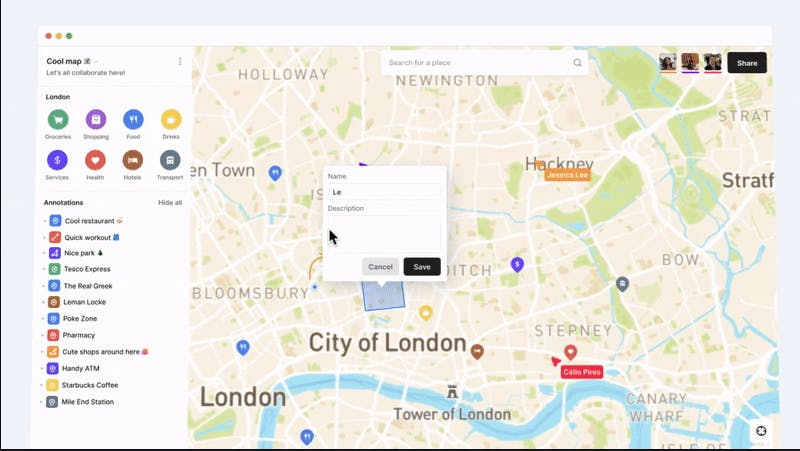
The portfolio has everything. Well, some things are not working now, but it had blog posts, templates, ideas, real products, and so on.
It doesn't have to display only apps
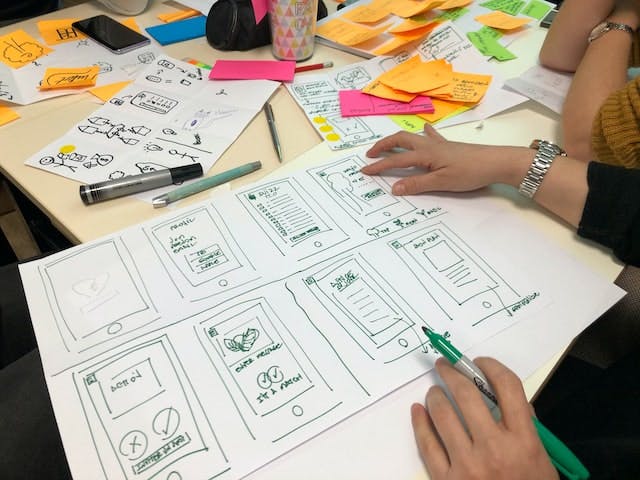 Photo by Amélie Mourichon on Unsplash
Photo by Amélie Mourichon on Unsplash
It's a mistake to think that a portfolio it's just a website exhibiting other websites. That works for a UI developer, but what if you're a backend developer?
Portfolios are an entry point to display what you've done. Not restricted to only whole functional apps, you can show designs, diagrams, research papers, ideas, talks, benchmarks, and even the thought process you follow when facing a challenge.
One last piece of advice
Recently I've been reading a book on neuroscience applied to sales, and it's surprising how our brain works.
Did you know that 85% of buys are made from an unconscious decision?
We're emotional creatures, and I know that doing all that I said is hard and takes time, but if you need the job soon and you don't have your amazing portfolio yet, it's ok to try your luck by just asking for the job (but you've to give a good speech).
I can guarantee it works sometimes.

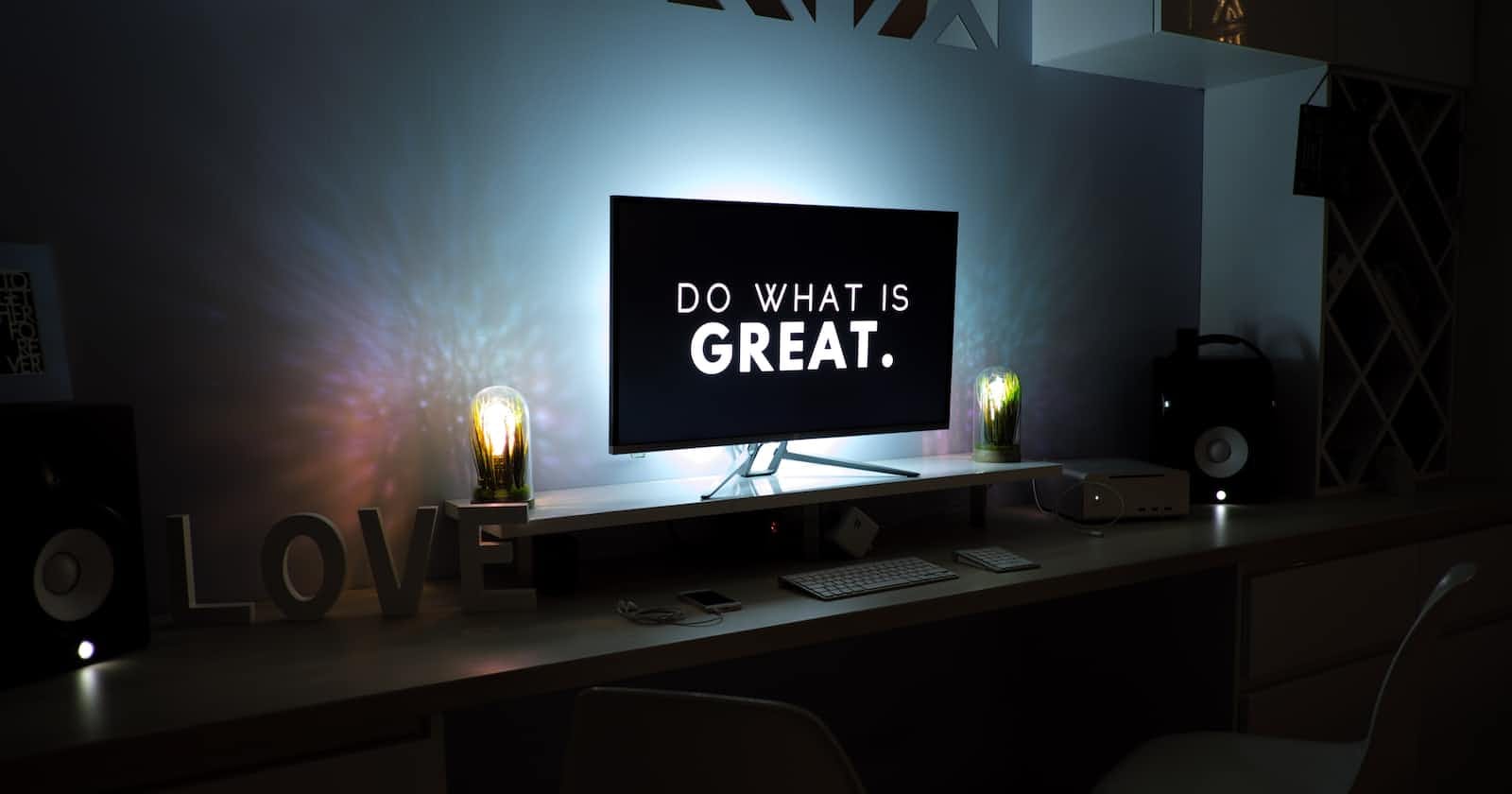
 (
(